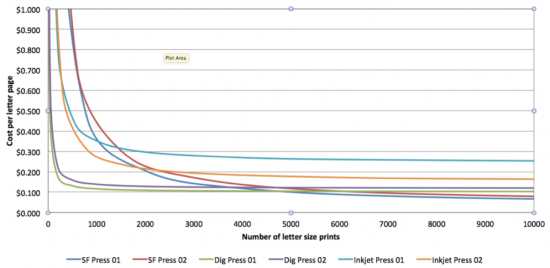
Features
Business
Management
Sales
Competitive bidding
Some pitfalls to avoid when competing for a job
November 13, 2020 By Bob Dale
 Photo: Pixabay
Photo: Pixabay With competitive bidding, everyone has heard horror stories of someone being awarded a job where the price charged is less than the cost of materials. We tell the customer that this is not possible, but the job is never awarded to us.
I was on the buyers’ side for the last 15 years and remember during a competitive bid for a tender, one supplier quoted almost 50 per cent of the current price. As a former printer, I advised our procurement team that this was not possible without any major technology, production or material changes, and actually had to convince the printer that this was not possible. I had the printer prepare an invoice for some specific orders and he realized his mistake and the quote was corrected.
There are not many buyers who would do this, but I needed to ensure my company would have a sustainable supply for this printed product, and I was interested in a long-term relationship, instead of short-term savings.
The impact of the COVID-19 pandemic has resulted in less work in some segments, and some printers are getting desperate to get whatever work is available. Desperation pricing will not help; not only does it harm your bottom line, but it also harms your staff, suppliers and the industry! If you are operating a lean organization, selling below cost and not costing the work properly will speed up your demise.
You may win the job, but it does not win the customer
Customers who award the job to you only because you have the lowest price may abandon you when you quote work at true cost or, heaven forbid, try to recover previous losses, because your relationship is based on low cost only. Earn the respect of the client and bring more to the relationship than low prices.
Printers need to focus on value-added services instead of selling on price. This requires a consultative sales approach – understand full supply chain and product life cycle to explore opportunities to reduce costs to win the client! But that discussion is for another day.
For those printers that think that the temporary Canada Emergency Wage Subsidy (CEWS) program enables printers to lower their prices, that is a quick way to bankruptcy. To be eligible, your company has experienced a defined loss of revenue, which also means your utilization rate has declined. As your utilization rate decreases your true cost increases, since you now need more revenue to cover your fixed costs that are amortized in your Budgeted Hourly Rate (BHR). On paper, accounts would say that you need to increase your BHR, but in today’s competitive market that would be a challenge.
Know your costs!
 Understand your cost structure with budgeted hourly rates. There are great tools available through the CPIA/Printing United Alliance. They have several tools and services such as Print-AS Cost Calculator or Cost Rate Advisor subscription.
Understand your cost structure with budgeted hourly rates. There are great tools available through the CPIA/Printing United Alliance. They have several tools and services such as Print-AS Cost Calculator or Cost Rate Advisor subscription.
With the BHR calculations, the final adjustments are for number of shifts the equipment is planned to operate and the estimated utilization rate. The difference between a press operating one shift with low utilization has a true cost rate that can be four times more than the same press operating three shifts with high utilization! Therefore, if your operation pre-COVID was charging $200 per hour based on a high utilization, multi-shift operation, and you now reduce your shifts and decrease your utilization, your true cost can now be $800 per hour for the same piece of equipment.
Is your pricing competitive?
Measure your win/loss ratio. If you have three main competitors, a competitively priced printer should win one of three quotes submitted. If you’re winning more than that ratio, that indicates your prices are too low and you are leaving money on the table. If you are winning less than that ratio, then your prices may be high, or someone else has a more economical way to produce the work.
One final thought: pricing only matters if you are getting paid, so don’t forget credit checks! Reward paying customers with good pricing and service, and add a little for interest and recovery effort for the slow payers.
Bob Dale is Vice President of Connecting for Results Inc. Bob has many years of graphic communication management experience, including over 15 years offering management consulting services, transition execution and support, and has published many columns on effective cost management and management information systems for the graphic arts industry.
This article was originally published in the July/August 2020 issue of PrintAction.
Print this page